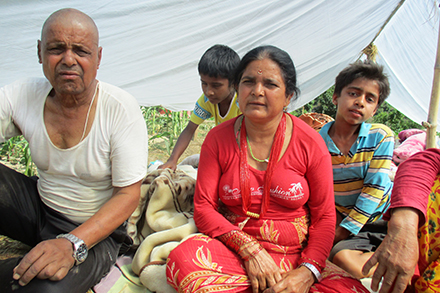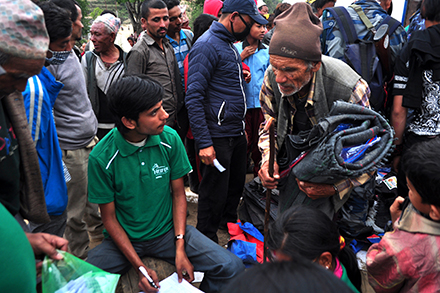
Just when things were starting to get back to normal, 16 days after a massive earthquake hit Nepal, another major earthquake struck us again on Tuesday, May 12, 2015. The jolt took the lives of more than 100 additional people and injured many more, raising the death toll to more than 8,500 as of May 18. The 7.3 Richter scale quake has produced fresh trauma among residents and increased pressure on the government and development agencies to respond quickly.
Tupache Village, in Nuwakot district, was severely affected by the disaster. What used to be a vibrant community now seems like a war zone, with rubble stretched out for miles and miles. When you look inside the broken windows and fallen walls, you can picture the people's lives before the disaster destroyed their community.
You can help residents of Tupache and other villages struggling to rebuild their communities.

Uma Nepal, 41, belongs to Suryamukhi Women's Group. This past year, her family earned NPR 100,000, or about $1,000, by selling livestock and agricultural products. Since the quake, she has been camping out on her farm under a plastic sheet with four other families. The plastic heats up during the day and, without proper ventilation, can be suffocating. But she is grateful that her family is protected against the rain. The quake took her house and livestock, a water buffalo and a breeding buck, which provided the majority of her family's income. "The earthquake has destroyed the irrigation canal that provided services for 600 farming families in our village," Uma said. "The corn is drying out in the fields, as we cannot water them. Rice planting season is coming up. How are we going to water them? What are we going to eat?"

There is a pressing need for sustainable rehabilitation programs to ensure food security and resurrect livelihoods in Nepal.
A Tupache community school teacher shared, "It was our luck that the [first] earthquake struck on a Saturday, as the school was closed. Otherwise, the number of student casualties would be more. For now, the school is closed down indefinitely. We haven't yet decided if classes will be conducted out in the open under tarpaulins (tarps) or will remain closed." Besides impeding education, the earthquake has been psychologically scarring for the children. Especially since the May 12 quake, children and adults alike have been traumatized and stressed. Under such fragile circumstances, there is an urgent need to help the affected families rebuild their lives and regain a sense normalcy.
So far, Heifer Nepal has provided temporary shelters to more than 20,000 families, and relief efforts are ongoing. Plans are underway for Heifer to work jointly with government and donor agencies to reconstruct livelihoods for communities who work with livestock and agriculture.